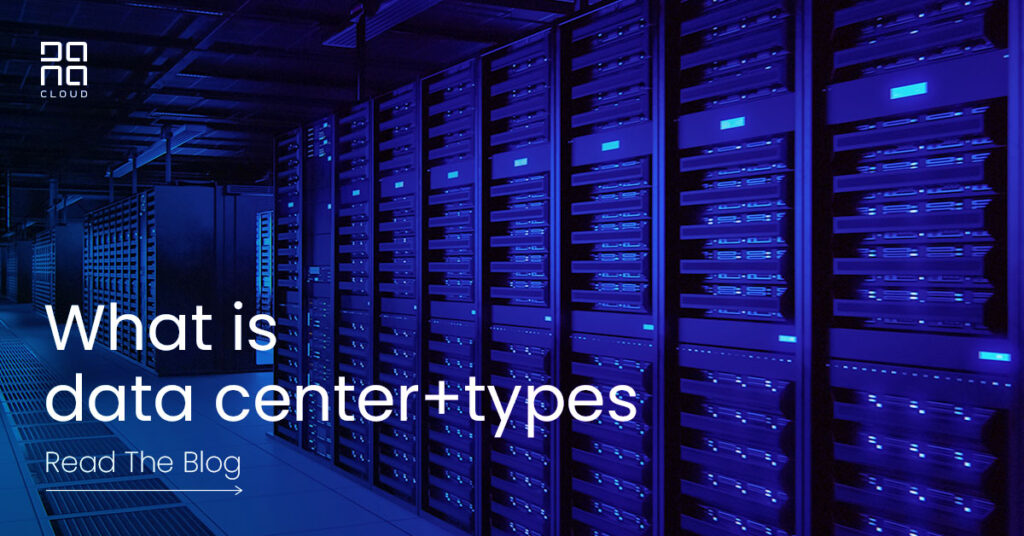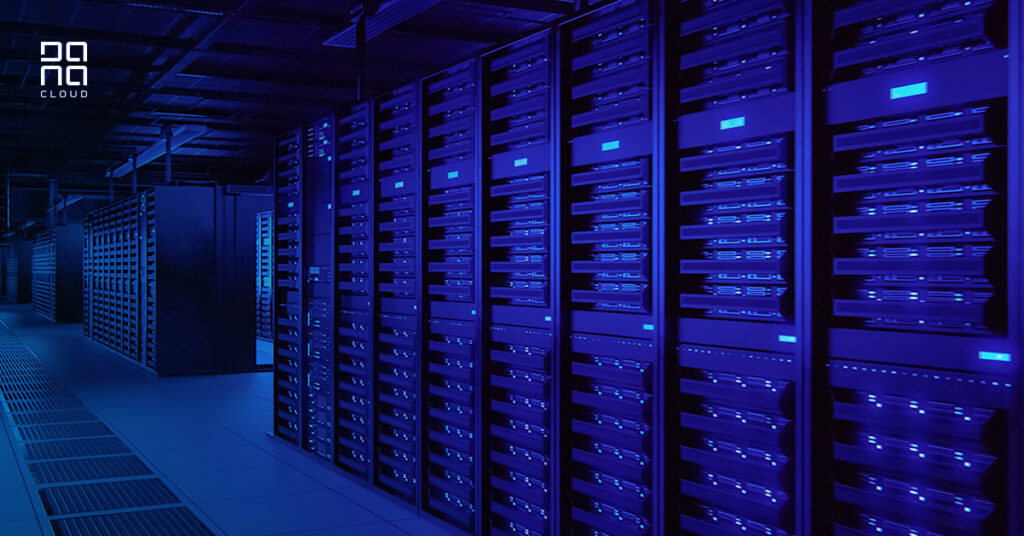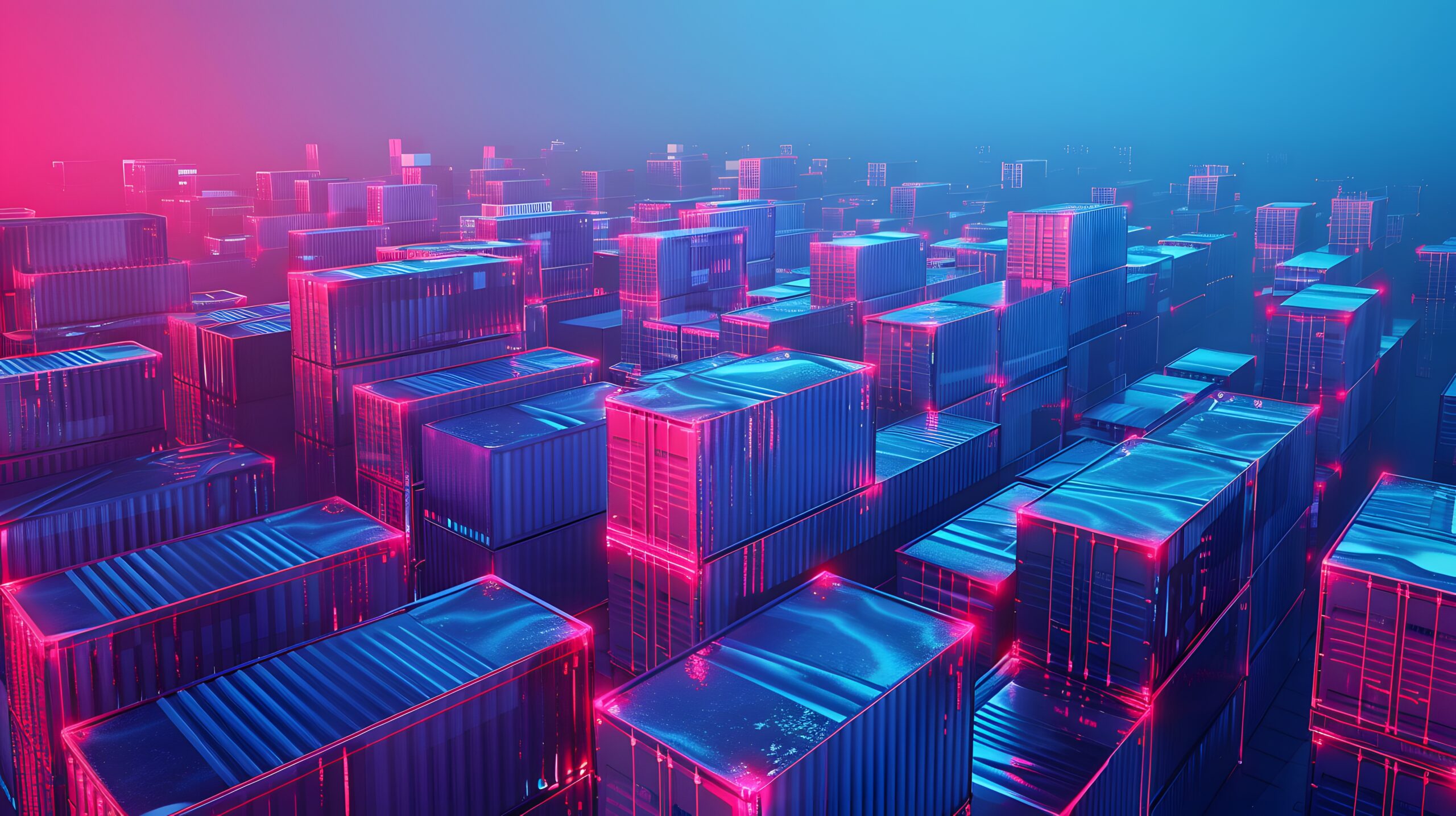While generally true, there is more to data centers than that. A Data Center is a highly secure facility with powerful servers that store, process, and manage vast amounts of data. Every time you access a website, send an email, or use an app, you’re relying on a data center to deliver that information quickly and reliably. This article will be about data centers, all their types, and clouds. Let’s dive in!
Data Center Definition
So, first of all, a data center is a physical location. A very safe and secure one where a company, establishment, or government has its IT infrastructure, data, and applications. With that said, the definition of the data center is pretty simple: where servers store, manage, and distribute data.
Each data center can contain a wide range of equipment, including servers, storage systems, networking devices like routers and switches, as well as backup power supplies, cooling systems, and security measures. These components work together to ensure high availability, efficiency, and protection of the data and services they support.
Cloud Data Center
A cloud data center is maintained by a cloud service provider (unlike traditional data centers that usually belong to a single organization and are used by it). A cloud data center is a specialized type of data center designed to support cloud services, offering storage, computing power, and networking through “virtualized” resources. A cloud data center provides services and resources to multiple clients and businesses, giving them the opportunity to rent infrastructure instead of owning and managing it themselves.
The critical difference between a cloud data center and a traditional data center lies in flexibility and accessibility. Traditional data centers -as we said before- are physical locations with fixed resources. In contrast, cloud data centers offer on-demand, pay-as-you-go services that can be scaled up or down as needed. Additionally, cloud data centers are distributed globally, offering redundancy and high availability, making them ideal for modern digital services and applications.
Related article: What Is a Micro Data Center?
Types of Data Centers
Based on the company type and its unique use of a data center, there are multiple types of data centers.
-
On-Site Enterprise Data Centers
This is a type that exists on the premise of a company or organization. It’s actually quite popular since it gives the owner control and accessibility over the information and security. On-premise data centers are often used by companies that work with sensitive information and have to maintain high-security online actions.
Read more: What is an enterprise data center?
-
Public Cloud and Large-Scale Cloud Data Centers
These are facilities operated by cloud providers like AWS, Microsoft Azure, and Google Cloud. These centers offer scalable, on-demand computing resources to businesses and individuals via the Internet. Large-scale cloud data centers, often called “hyperscale,” handle massive amounts of data and serve millions of users globally.
Read more: What is Hyperscale data center?
-
Managed Hosting Data Centers and Colocation Centers
These are kinds of third-party operations for organizations that need data centers but don’t have the space on their own site. In a managed data center, the provider handles maintenance, security, and operations. Colocation facilities, on the other hand, allow companies to rent space for their own servers and equipment within a shared facility while the provider manages the power, cooling, and network connectivity. Both options offer cost-effective solutions for businesses that want to outsource their data management without building their infrastructure.
Read more: What is a Colocation Data Center?
Based on size and usage, data centers can be put into other categories, which makes some more types that you might hear about. You’ll need to know about them in order to fully understand the concept. Here are some of them:
- Edge Data Centers: These are smaller facilities located closer to the end users to reduce latency and improve speed for applications that require real-time processing, such as IoT and autonomous vehicles.
- Micro Data Centers: Smaller, compact and, modular data centers designed for specific applications or locations, often used for localized computing needs and environments.
- Disaster Recovery Data Centers: A very specialized facility designed to take over operations in the event of a primary data center failure, ensuring business continuity through data replication and backup systems.
- High-Performance Computing (HPC) Data Centers: Designed to support complex computations and intensive workloads, such as scientific simulations, financial modeling, and large-scale data analysis.
- Government Data Centers: Managed by governments to store and process sensitive information securely, adhering to strict compliance and security regulations.
- Hybrid Data Centers: Combine on-premises infrastructure with public cloud resources, allowing businesses to take advantage of both models for flexibility and scalability.
Modern data center architecture
The Modernization of data centers is mainly based on Virtualization and simplifying in terms of space, maintenance, and time. Nowadays, data centers are becoming more efficient by leveraging cloud infrastructures. This means that instead of using hardware, they utilize virtualized CPUs, storage, and networks. Generally, this means less workload, less physical space, and, of course, more flexibility. This means that resources can be easily allocated or scaled up and down based on demand. Imagine the data center used for an application. Suppose the application needs more power for a busy period. In that case, it can draw from this shared pool without needing additional physical servers. This flexibility helps organizations optimize their resources, reduce costs, and quickly adapt to changing needs.
Benefits of modern data center architecture
- Ease of use for applications and services
- Enabling software-defined infrastructure (SDI)
- Scalability
- Variety of Solutions
If you want to know about data center tiers come here.
Data center security : How to Keep Your Data Safe
If a data center is supposed to keep data safe for a company or organization, then what’s keeping the data center safe?
There are several layers of security measures taken in each data center. Physical security includes robust access controls, such as biometric scanners and security personnel, to prevent unauthorized entry. Additionally, data centers utilize advanced surveillance systems to monitor activities continuously. There are also firewalls, intrusion detection systems, virus protectors, and encryption protocols against cyber threats. Furthermore, redundancy in power supplies and cooling systems helps maintain operations during outages. Together, these measures create a secure environment to safeguard the sensitive data housed within data centers.
Read more: Data Center Electromagnetic Waves
Sustainability and green data centers
With sustainability becoming a vital part of businesses in the 21st century, it’s more important than ever to create data centers that are friendly to our planet and use energy efficiently. One key step in this process is managing power usage and getting energy from renewable sources like solar and wind power. These are the steps taken by companies all around the world to move towards sustainability in data centers:
- Energy-Efficient Hardware: Invest in energy-efficient servers and equipment that consume less power and generate less heat.
- Virtualization: Virtualization technologies are used to maximize resource utilization and reduce the number of physical servers needed.
- Renewable Energy Sources: Sourcing energy from renewable options like solar, wind, or hydropower to minimize carbon footprint.
- Advanced Cooling Techniques: Implement innovative cooling solutions, such as liquid cooling or free air cooling, to reduce energy consumption.
- Efficient Layout Design: Optimize data center layout to improve airflow and reduce the energy needed for cooling.
- Recycling and Reusing Equipment: Implement programs to recycle old equipment and refurbish hardware instead of disposing of it.
- Monitoring and Optimization: Uses software tools to monitor energy usage in real time and identify areas for improvement.
Common data center challenges
As any other modern and internet based structure, a data center can potentially face challenges and safety issues. That’s when operation teams, IT and network specialists and external emergency teams come into play to solve them as soon as possible. Here are some common challenges data centers face:
- Energy Consumption: Data centers consume a huge amount of energy to power servers and maintain optimal cooling. If not efficiently done, it can lead to overheating and even fires. It’s important to leverage the consumption and maintenance of site to keep everything going smoothly.
- Cooling Issues: Maintaining the right temperature is crucial for preventing equipment overheating. Ineffective cooling systems can lead to hot spots, risking server failure and impacting overall performance.
- Security Threats: Data centers are prime targets for cyberattacks, such as hacking and data breaches. Ensuring robust security measures, both physical and digital, is essential to protect sensitive information. This calls for professional security teams and reliable online measures.
- Scalability Challenges: As businesses grow, their data needs increase. Data centers must be able to scale their resources quickly and efficiently to accommodate rising demands without compromising performance or reliability.
Emerging Technologies in Data Centers
With the epiphany of Artificial Intelligence in the last few years, data centers have been affected too. But AI is not the only new thing that’s in the horizon in this field. Here are some technologies to keep an eye for, regarding data centers:
- Artificial Intelligence (AI): AI is being used to optimize data center operations by automating processes like monitoring, maintenance, and resource allocation. This helps reduce downtime and improves efficiency by predicting potential issues before they occur.
- Edge Computing: This technology (also known as process perimetral or computation on the edge) brings computation and data storage closer to the needed location, reducing delays and improving response times.
- Containerization: This allows applications to be packaged with their dependencies and run consistently across various environments. By using portable units called containers, companies can execute their applications faster and manage resources more efficiently.
- Green Technologies: Innovations like renewable energy sources, energy-efficient cooling systems, and advanced power management tools are being adopted to create more sustainable data centers. These technologies aim to minimize energy consumption and reduce the carbon footprint of data center operations.
4 Big Data Centers you need to know about
1. The Citadel Data Center (USA)
Located in Storley County, Nevada, The Citadel is one of the largest data centers in the world, spanning over 1 million square feet. Developed by Switch, this facility is known for its advanced technology and commitment to sustainability. The Citadel uses 100% renewable energy to power its operations and offers a secure environment for cloud services, colocation, and managed services to various enterprises.
2. The Lakeside Technology Center (USA)
located in Chicago, Illinois, Lakeside Technology Center is one of the largest data centers in North America, occupying a former manufacturing facility with over 1.1 million square feet of space. It provides a robust infrastructure for various clients, including financial institutions and cloud service providers. The facility offers advanced cooling systems and redundancy features to ensure optimal performance and security for mission-critical applications.
3. Fujitsu Data Center (Japan)
Fujitsu operates a major data center in Nagano, Japan, known for its energy efficiency and advanced infrastructure. This facility focuses on providing cloud computing services and supports a range of industries, including telecommunications, finance, and healthcare. Fujitsu’s data center employs state-of-the-art cooling and power systems, significantly reducing environmental.
4. Equinix Data Centers (Global)
Equinix operates a network of over 200 data centers across 55 markets worldwide, including locations in North America, Europe, and Asia. These interconnected facilities provide colocation and interconnection services, enabling businesses to connect to partners, customers, and networks easily. Equinix data centers prioritize security, reliability, and energy efficiency, making them a preferred choice for enterprises seeking global reach and scalability.
Final Thoughts
In conclusion, data centers are big players in our digital world, ever evolving with new technologies and creating more opportunities. As organizations increasingly rely on these facilities, understanding their architecture, types, and sustainability efforts becomes crucial. Getting to know how a data center helps a business scale and expand its services while making the processes faster and easier, will give you a more in depth understanding of just how crucial data is to our life and internet presence.
The services we use everyday in Dana cloud, how we get our news, the weather forecast and how prices change in seasonal sales are all based on data, and data centers enhance efficiency and resilience of these date, ensuring they meet the growing demands of modern businesses that effect our lives deeply.
FAQs
What is a data center?
- A data center is a secure facility that stores, processes, and manages large amounts of data.
What is the difference between a traditional data center and a cloud data center?
- Traditional data centers are physical locations owned and operated by a single organization. Cloud data centers are large-scale facilities owned by cloud service providers and offer computing resources to multiple clients over the internet.
How do data centers ensure data security?
- Data centers use physical security measures like access controls and surveillance, as well as digital security measures like firewalls, encryption, and regular security audits.
What are some emerging technologies in data centers?
-
- Emerging technologies include AI, edge computing, containerization, and green technologies.



